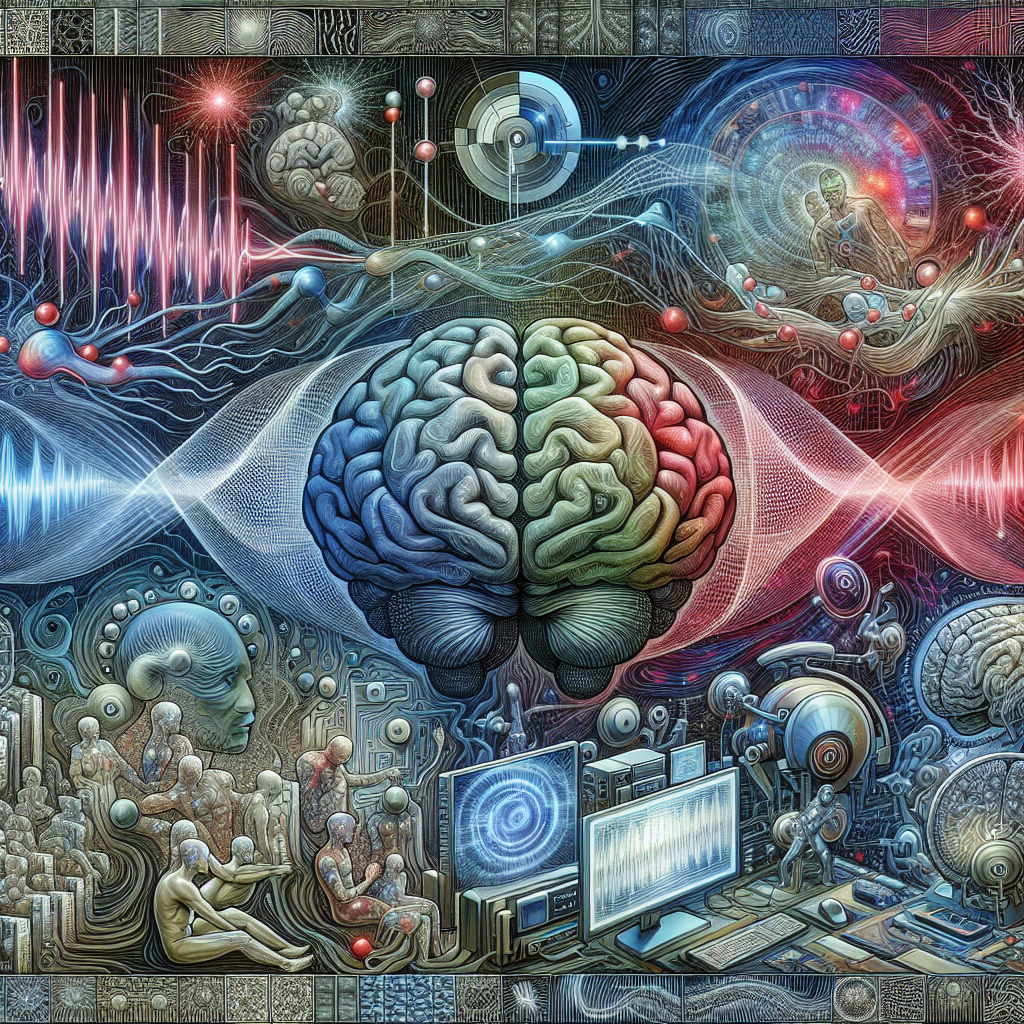
Introduction
In an era where the intersection of neuroscience and technology is flourishing, the concept of Event Related Potentials (ERPs) in action showcases groundbreaking innovations in Brain-Computer Interface (BCI) technology. Imagine a world where individuals can control devices merely with the power of their thoughts. This potential is no longer a distant dream; it’s unfolding in exciting, tangible ways. As we delve deeper into the world of ERPs and BCIs, we’ll uncover how these innovations have transformed healthcare, gaming, and even communication, offering unprecedented opportunities for individuals with disabilities and beyond.
Understanding Event Related Potentials
What are Event Related Potentials?
Event Related Potentials are measured brain responses that are the direct result of a specific sensory, cognitive, or motor event. In simpler terms, when the brain processes information—like when you hear a sound or see a light—it generates small electrical activities that can be measured using an electroencephalogram (EEG).
The Role of ERPs in Brain-Computer Interfaces
In the realm of Brain-Computer Interfaces, ERPs play a pivotal role. They allow researchers and developers to decode signals from the brain and translate them into actionable outputs. This capability enables users to communicate or control devices in real time, creating a more intuitive interaction with technology.
Types of Event Related Potentials
- P300 Wave: Often elicited when a person detects an infrequent or unexpected stimulus.
- N200 Wave: Related to cognitive control processes, particularly in tasks involving decision making.
- Mismatch Negativity (MMN): Reflects automatic processing of auditory stimuli, crucial for applications in communication BCIs.
The Science Behind Brain-Computer Interfaces
How BCIs Work
At their core, BCIs work by interpreting signals from the brain, processing these signals, and then translating them into commands for external devices. This involves several intricate steps:
- Signal Acquisition: Using technologies like EEG, researchers capture brain activity.
- Signal Processing: The acquired signals are filtered and amplified.
- Feature Extraction: Identifying specific patterns as event-related potentials.
- Classification: Using algorithms to classify these patterns into commands.
- Output: The classified commands are sent to a device, enabling user interaction.
The Connection to ERPs
ERPs serve as a rich source of data during the signal acquisition phase, enabling the BCI to understand user intent more effectively. By focusing on the brain’s real-time reactions to stimuli, BCIs can provide a seamless feedback loop between the user and the device.
Innovations in BCI Technology
Case Study 1: Neuroprosthetics for Communication
One of the most impactful applications of Event Related Potentials in Action: Innovations in Brain-Computer Interface Technology can be seen in the development of neuroprosthetics for individuals with speech impairments.
Analysis
In a trial involving ALS patients, subjects were able to communicate thoughts directly through a BCI that utilized ERPs as control signals. As they imagined speaking, the BCI detected the P300 wave, allowing them to select letters on a screen. This innovation not only restored a method of communication but also enhanced the quality of life for many individuals.
Case Study 2: Gaming and Virtual Reality
Another exciting application is in the gaming industry, where developers have started integrating BCIs to create immersive experiences that respond to players’ thoughts.
Analysis
In a study conducted by a major gaming company, participants used a BCI equipped with ERP detection to control their avatars during gameplay. The results showcased that players could move, jump, and interact with the game environment just by thinking about the actions. This innovation in Event Related Potentials in Action: Innovations in Brain-Computer Interface Technology highlights the potential for creating more engaging, interactive gaming experiences.
Case Study 3: Controlling Smart Environments
The integration of BCIs with smart home technology is a burgeoning field where ERPs are paving the way.
Analysis
Researchers developed a smart home interface that enabled users to control lighting, heating, and even appliances through thought. By identifying specific ERPs linked to commands (like the desire to turn on a light), users found a new level of independence in managing their environments. These innovations demonstrate the practical and transformative power of BCIs.
The Future of Event Related Potentials and BCIs
Advances in Technology
The future of Event Related Potentials in Action: Innovations in Brain-Computer Interface Technology is bright. With ongoing advancements in machine learning and signal processing, it is expected that BCIs will become more accurate and responsive. These advancements will enhance accessibility for individuals with disabilities, paving the way for greater inclusivity.
Emerging Research Areas
- Wearable Technology: Future BCIs may integrate with wearable devices, enabling continuous brain monitoring.
- Enhanced Learning Tools: ERPs could revolutionize education, allowing for tailored learning experiences based on real-time cognitive engagement feedback from students.
- Mental Health Applications: BCIs using ERPs may offer new avenues for diagnosing and treating conditions like depression and anxiety.
Conclusion
As we explore the realm of Event Related Potentials in Action: Innovations in Brain-Computer Interface Technology, it becomes evident that we are on the cusp of a new era in human-computer interaction. From enhancing communication for individuals with disabilities to redefining entertainment and everyday living, the implications are profound.
Motivational Takeaway
Harnessing the potential of our brains to interact with technology unlocks limitless possibilities. As we stand on the brink of these innovations, let’s embrace the journey and advocate for inclusivity, creativity, and progress in this exciting frontier.
FAQs
1. What are Event Related Potentials (ERPs)?
ERPs are brain responses that result from specific sensory, cognitive, or motor events, measurable through EEG.
2. How are ERPs used in Brain-Computer Interfaces?
ERPs provide critical data that helps decode brain signals, translating them into commands for devices.
3. Can BCIs improve the quality of life for individuals with disabilities?
Yes, BCIs utilizing ERPs can restore communication and enhance day-to-day independence for those with disabilities.
4. What are some applications of BCIs in gaming?
BCIs can allow players to control their avatars using thought, creating immersive and intuitive gaming experiences.
5. What does the future hold for BCI technology?
The future of BCI technology may include advances in wearables, enhanced learning tools, and applications in mental health.
In a world increasingly influenced by technology, understanding and harnessing the power of Event Related Potentials in Action: Innovations in Brain-Computer Interface Technology not only benefits individual users but also has the potential to reshape society as a whole. By embracing these innovations, we can create a future where every thought has the power to drive change.

















